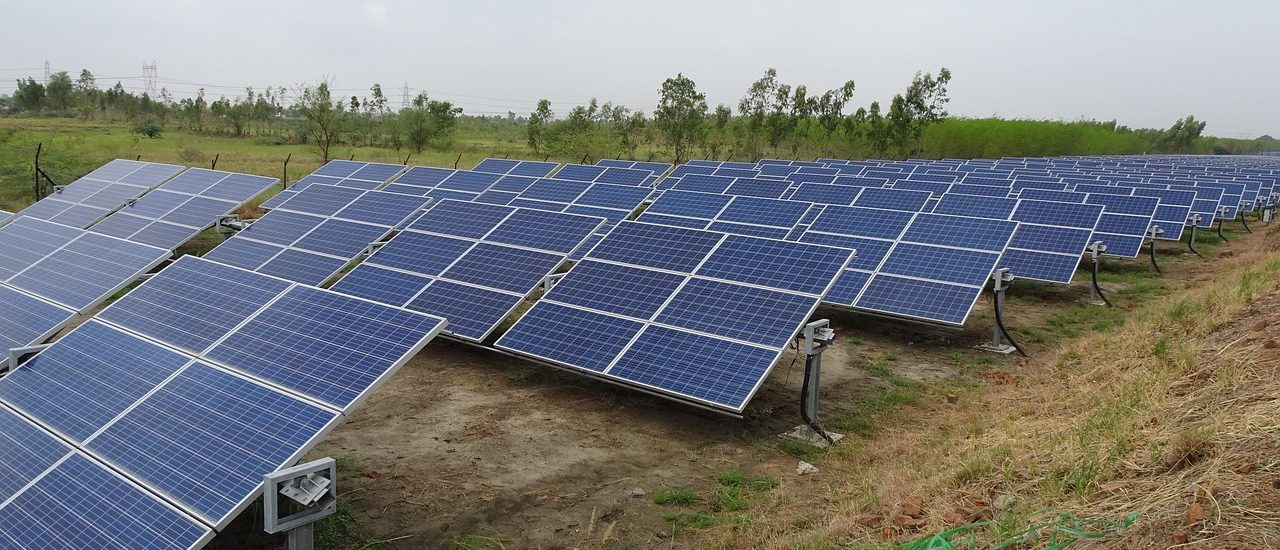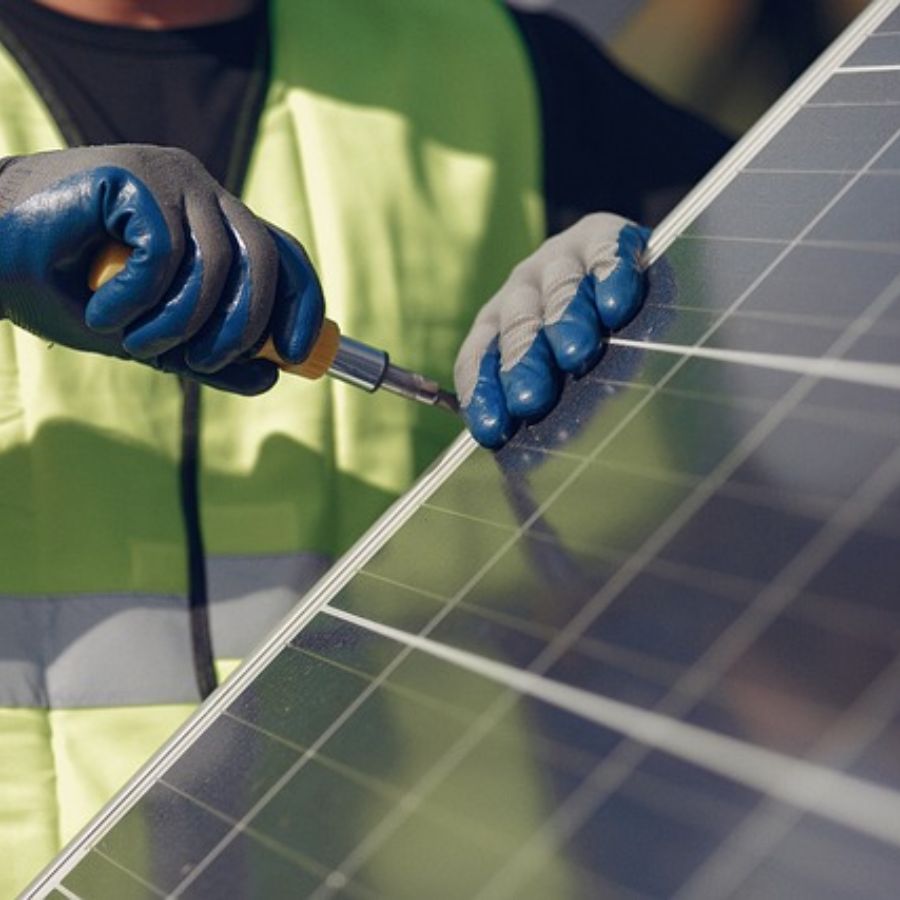


As the world grapples with the pressing challenges of climate change and depleting fossil fuel resources, renewable energy sources have gained significant traction. Solar energy is a clean, abundant, and sustainable solution that you easily can calculate. In a diverse country like India, where sunlight is excess throughout the year, harnessing solar power has become crucial in the energy transition. One of the vital factors in optimizing solar energy production is determining the ideal direction and angle for solar panels.
This article will discuss the importance of solar panel direction and angle in India. In addition, we will consider the geographical and climatic variations that play a pivotal role in maximizing solar energy generation.
Geography and climate intricately shape India’s climatic tapestry, creating a spectrum of conditions that impact solar panel installations. The nation’s diverse landscape, stretching from the snow-clad Himalayas to the balmy Kerala shores, gives rise to varying climatic zones. These geographical disparities translate into distinct solar energy potential across regions. Comprehending the interplay between geography and climate is imperative to ensure optimal energy capture from solar panels.
The success of a solar panel installation hinges on a harmonious fusion of solar panel angle and orientation, fine-tuned in response to local conditions. By factoring in geographical location and climatic nuances, solar panel systems can be in a position to harness the abundant solar resources prevalent throughout India.

The sun’s path of the sun across the sky can primarily influence the direction in which solar panels should orient. In the northern hemisphere, including India, the sun moves from east to west, reaching its highest point in the southern part of the sky at noon. Consequently, solar panels should ideally face south to capture maximum sunlight throughout the day.
However, the ideal orientation might vary depending on the location within India. In regions closer to the equator, such as southern India, the difference in solar energy gain between facing due south and slightly towards the west or east may be minimal. In contrast, facing south becomes more critical due to lower solar angles during winter months in northern India.
The tilt angle of solar panels plays a crucial role in optimizing energy generation. It refers to the angle at which solar panels are inclined relative to the horizontal plane. Furthermore, the optimal tilt angle varies based on the location’s latitude and the season.
In India, considering the country’s diverse latitudinal range, a general guideline is to set the tilt angle equal to the latitude for the specific location. For instance, in New Delhi (latitude approximately 28.6° N), the optimal tilt angle would be around 28.6 degrees. Besides, this allows the solar panels to capture the most sunlight throughout the year. It balances maximizing summer energy production and accommodating the lower winter sun angles.
Optimizing a solar system goes beyond the initial setup, involving strategic adjustments that amplify energy output. While aligning the tilt angle with latitude offers a solid foundation, seasonal fine-tuning becomes pivotal. Solar panels can be adapted periodically to align with shifting sun trajectories. In India, recalibrating the tilt angle twice annually – in March for summer and September for winter – unlocks peak energy generation potential.
During these recalibrations, a nuanced approach comes into play. Winter warrants a slightly steeper tilt angle to harness lower sun angles effectively. Conversely, a gentler tilt in summer accommodates the higher sun path. By integrating these adjustments, solar installations align with the optimum tilt angle throughout the year. This dynamic adaptation ensures your solar system remains in sync with the changing solar dynamics. Again, it perpetually captures the sun’s abundant energy and maximizes the efficacy of the entire solar panel set.
One needs to consider several factors when determining the optimal tilt angle:
The latitude of a location serves as a cornerstone when establishing the optimal angle for solar panels. This geographical marker plays a pivotal role in shaping the angle at which solar panels should be to achieve maximum energy harnessing. In essence, the latitude directly informs the optimal solar panel angle, ensuring panels are oriented optimally to the sun’s path.
In regions closer to the equator, where the sun’s trajectory remains relatively consistent throughout the year, the optimal angle for a solar panel may differ marginally from the latitude. However, as one moves towards higher latitudes, particularly in countries like India, it holds more sway in determining the optimal angle.
This principle stems from the fact that the angle between the sun’s rays and the surface of the Earth changes with latitude. Therefore, aligning the solar panels with the latitude facilitates the most effective interception of sunlight, resulting in enhanced energy production. Consequently, the latitude becomes a crucial parameter when configuring solar installations. Again, it ensures they are prime to reap the maximum benefits of solar exposure.
Comprehending the dynamics of the sun’s seasonal journey is instrumental in harnessing the full potential of solar power. The sun’s trajectory across the sky evolves with the changing seasons, influencing the efficiency of solar panels. This awareness underpins the need for seasonal adjustments, particularly in regions like India, where solar power is abundant year-round.
During winter, the sun takes a lower and shorter path across the sky, necessitating a steeper tilt angle for solar panels. By aligning panels with this specific winter angle, they can capture the sun’s rays more effectively during the season when its trajectory is lower. Conversely, the sun ascends higher as summer arrives, requiring a shallower tilt angle to optimize energy capture.
Understanding these nuanced shifts empowers solar panel installers to fine-tune the panel angles at different times of the year, ensuring optimal energy output. This synchronization with the sun’s seasonal arc enhances the efficiency of solar power systems. It results in consistent and reliable energy production throughout the year. In essence, comprehending the seasonal solar path is about maximizing energy generation. It also includes optimizing the utilization of solar power resources available in a given region.

Tailoring a solar panel angle to match a building’s energy consumption patterns can yield substantial benefits in energy optimization. A strategic approach to adjusting the panel angles can be devised by aligning a solar panel installation with the energy demand peaks.
For instance, a building can experience heightened energy consumption during the scorching summer months due to increased air conditioning use. In such a scenario, aligning the solar panel angle to optimize energy production during this period becomes advantageous. By capitalizing on the intense sunlight, solar panels can generate more electricity precisely when necessary.
This responsive strategy highlights the adaptability of a solar panel angle to complement a building’s energy needs. It maximizes the efficiency of solar power utilization, making the most of available resources. Integrating a solar panel angle with energy consumption patterns is an intelligent step toward a greener future. It reduces reliance on conventional power sources and showcases inherent flexibility and solar energy systems’ power in addressing specific energy demands.
Shading can significantly impact the efficiency of solar panel installations. When nearby structures, trees, or buildings cast shadows on solar panels, it reduces the amount of sunlight reaching the panels’ surface. As a result, that leads to decreased energy production. To counteract shading effects and ensure optimal performance, adjusting the tilt angle of the solar panels becomes essential.
Solar panels can minimize the impact of shading by strategically modifying the tilt angle. This adjustment aims to maximize the direct sunlight falling onto the panels, even in the presence of potential shading sources. Careful consideration of the sun’s trajectory and the position of shading elements can aid in determining the most effective tilt angle.
Moreover, advancements in solar technology, such as micro-inverters and optimizers, enable individual panel optimization. Again, this means that shaded panels won’t drag down the performance of the entire solar array, ensuring that energy production remains as efficient as possible.
In essence, while shading can pose challenges to solar panel installations, adjusting the tilt angle allows solar panels to mitigate these effects. This strategic approach guarantees that the potential of solar energy is harnessed optimally, even in the presence of shading obstacles.
Rooftop installations offer a convenient space for harnessing solar energy, but the roof angle can help determine the optimal solar panel direction and tilt. The roof’s angle is a crucial factor that can facilitate or limit the range of tilt angles suitable for solar panel placement.
In cases where the roof angle is relatively steep, it might naturally align with an ideal tilt angle for solar panels. This alignment can streamline the installation process and optimize energy production. Conversely, if the roof angle is shallow, it might necessitate careful consideration. The limited range of tilt angles due to the roof’s design can influence the solar panel direction and potential energy generation.
However, this constraint need not be a deterrent. Skilled solar panel installers can work within the limitations posed by the roof angle to identify the most effective tilt angle that aligns with the available space. Creative adjustments can ensure that solar panels capture as much sunlight as possible, maximizing energy output even within the confines of a specific roof angle.
Ultimately, the roof angle underscores the importance of a tailored approach when installing solar panels. It also highlights the need to adapt solar panel direction and tilt to the unique characteristics of each installation site.
The choice of solar panel technology wields a notable influence on determining the ideal tilt angle when installing solar panels. Diverse solar panel technologies exhibit varying tolerances for angle adjustments. Certain panels are more sensitive to changes in tilt angle, while others offer greater flexibility. This distinction underscores the significance of considering panel technology in the optimal tilt angle.
For instance, advanced technologies like monocrystalline or polycrystalline panels may have narrower angular tolerance ranges. Moreover, they necessitate precise angle configurations for optimal energy production. On the other hand, thin-film solar panels might display a more forgiving attitude toward deviations in tilt angle.
Selecting the most suitable panel technology for a given installation involves assessing its efficiency and performance characteristics and its responsiveness to tilt adjustments. By aligning the panel technology with the intended tilt angle range, solar panel installations can attain the highest energy generation and efficiency. Besides, this underscores the importance of tailoring solar panel angle decisions to the specific attributes of the chosen technology. It amplifies the benefits of solar energy systems.
Dust and debris accumulation on solar panels can dramatically impede energy production. As particles like dust, dirt, and debris settle on the panel’s surface, they cast shadows and obstruct sunlight absorption, diminishing panel efficiency. The solar panel’s tilt angle is crucial in mitigating these effects.
Designing the tilt angle to facilitate self-cleaning mechanisms is pivotal. A judiciously chosen tilt angle can allow rainwater to wash away accumulated debris, restoring the panel’s effectiveness. This self-cleaning attribute helps maintain consistent energy output without requiring frequent manual intervention.
However, periodic maintenance becomes necessary in regions with minimal rainfall or specific environmental conditions that hinder self-cleaning. The panels can be cleaned during routine check-ups to ensure unobstructed sunlight exposure and optimal energy production.
Solar panel installations can remain efficient and effective over time by factoring in the potential for dust and debris accumulation and designing the tilt angle accordingly. The approach ensures that solar energy systems continue to provide consistent energy output without succumbing to the detrimental impacts of environmental debris.
In urban environments and regions governed by stringent regulations, the aesthetics of solar panel installations hold significance. Solar panels, while offering sustainable energy solutions, must often blend seamlessly with their surroundings. Adhering to predefined aesthetic standards and legal guidelines becomes paramount in such settings, potentially influencing the solar panel’s tilt angle and orientation.
Local regulations and urban planning ordinances may dictate specific requirements concerning the appearance and solar installations’ visual impact. Again, it can extend to the angle at which panels are installed and the direction they face. Striking a balance between energy optimization and conformity with these regulations is crucial.
For instance, in historic districts or areas with architectural significance, solar panels might need to be oriented and tilted to minimize their visual prominence. Aligning solar panel installations with these requirements ensures harmonious integration into the surrounding environment. It does that while harnessing renewable energy.
Ultimately, solar panel installations that account for aesthetics and regulations underscore the multifaceted nature of sustainable energy adoption. Solar energy systems can contribute to a greener future by accommodating energy efficiency and aesthetic considerations. It does that while coexisting seamlessly within the fabric of urban landscapes.
Harnessing solar energy holds immense promise for a country like India, where sunlight is abundant for most of the year. Optimizing the direction and angle of solar panels is crucial to make the most of this renewable resource. A general rule of thumb suggests facing solar panels towards the south and setting the tilt angle equal to the latitude. However, factors such as latitude, local climate, energy consumption patterns, shading, and roof angles come into play. Seasonal adjustments can further fine-tune energy production, ensuring solar panels operate at their highest efficiency levels yearly. By paying careful attention to these factors, India can unlock the full potential of solar energy. In addition, it makes significant strides toward a more sustainable and energy-independent future.